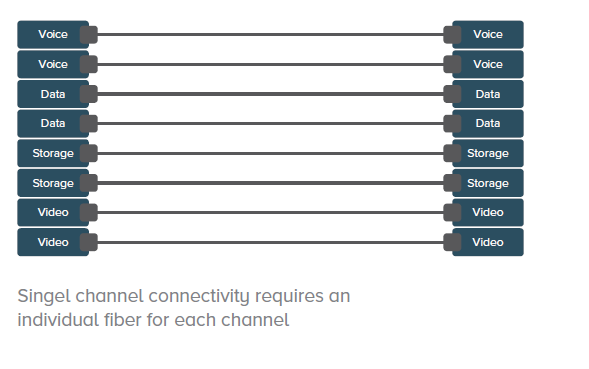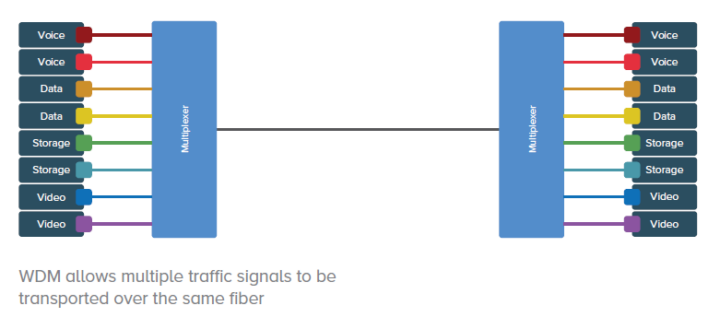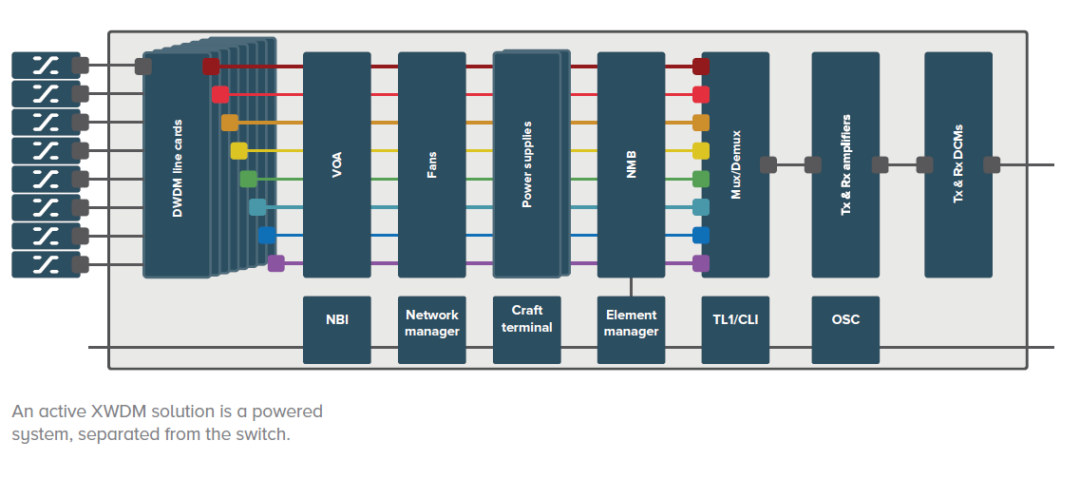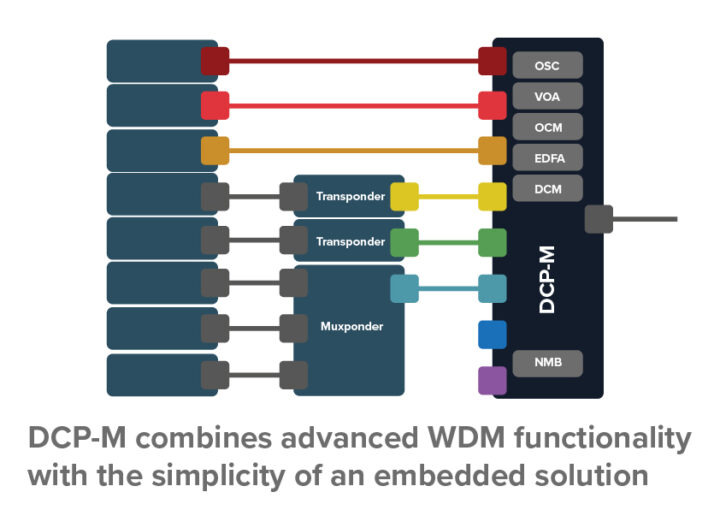FOUR WAYS OF TRANSPORTING DATA OPTICAL NETWORK
The most common approaches for transporting data over a fiber network is by using single channel connectivity, embedded XWDM solutions or active, transponder-based WDM platforms. Each alternative is based on an organization’s access to dark fiber, either owned or leased.
Single channel connectivity
The most basic way of transporting data over a fiber network is through single channel connectivity, where individual traffic channels run over individual fibers. A single channel transceiver is connected directly between the data switches at each site with a line fiber connected between. The method is also referred to as ELWL, extended long wavelength laser, connectivity.
This non-WDM enabled approach requires access to a fiber for each and every service. And no other traffic can be transported through the fiber. This in turn means that the cost for adding additional channels increases linearly at the cost of renting additional fiber.

Embedded WDM solutions
Embedded XWDM represents an evolution from single channel connectivity. An XWDM transceiver is used instead of an ELWL single channel transceiver and connected directly to the data switch. Each signal is then connected to a multiplexer. With only these components, an embedded WDM solution is as simple as an ELWL approach to implement and manage.
What’s more: The WDM solution allows multiple traffic signals to be transported over the same fiber, increasing the utilization of that fiber. New channels can be added to the embedded WDM system simply by connecting new transceivers. By deploying WDM technology, up to 80 channels of traffic can be connected together over the same fiber. ROI is realized when the second channel is added.

Although a basic ELWL transceiver usually beats the embedded WDM components on price per unit, a WDM based solution is far more cost effective as soon as a second channel is required.
Embedded WDM offers simple, easy to manage and cost efficient solutions for transporting large amounts of data over short to mid-range distances, typically up to 80 kilometers. Since no additional power is required for the embedded components the solutions are also preferred for creating green datacenters.
Active WDM networking solutions
Active XWDM solutions are stand-alone AC or DC powered systems, separated from the switch. In an active solution a transponder takes the output from the SAN or IP switch and converts it to a longer distance XWDM signal. After this OEO conversion, the long distance XWDM signal is transmitted through transceivers and multiplexers. To support management and control of the active, stand-alone, WDM solutions they usually come with a GUI-based management interface.

This makes an active, transponder based solution a powerful platform for transmitting huge amounts of data between different sites over short or long distances. A drawback of active systems: OEO conversions tend to incur unwanted latency.
Traditionally active WDM systems were designed for dedicated carriers and service providers. In most cases neither the capacities nor the advanced feature-set of a traditional active WDM solution is required for corporate use. This makes an active system not only unnecessarily complicated to design, install and configure from an enterprise point of view, but also expensive to own and maintain.
Traditionally, enterprises and corporate datacenters have opted for the embedded approach to WDM solutions, offering similar capabilities to transmit a vast range of channels over a single fiber, at a fraction of the cost of an active system.
A new approach to embedded WDM networking
Having recognized that an active WDM system in most cases is far too much compared to what is needed for enterprise use, these systems do offer significant benefits over passive systems in terms of system management and signal amplification for longer distances. An ideal WDM networking solution for corporate datacenter connectivity should combine the simplicity of a passive, embedded solution with the value-adding features of an active WDM platform.
Smartoptics open line systems marks a revolution in fiber optic networking solutions. DCP-M is a unique 1U multiplexer platform that combines everything required for an open line networking system – simple, reliable, and open. A multiplexer with integrated channel monitoring, amplification and signal conditioning. It easily handles all of today’s data protocols up to 100 Gbps per channel in a simple plug and forget approach.

Our new intelligent approach to embedded WDM networking offers advanced functionality similar to that of active solutions but without the complexity.
Corporate data centers, enterprises, and campus networks can now synchronously connect all of their storage and data traffic between sites with minimal complexity and signal latency.
Read more about Smartoptics open line systems here.


Related articles

What is a SAN and how does it protect mission-critical workloads?

What is Fibre Channel used for?
